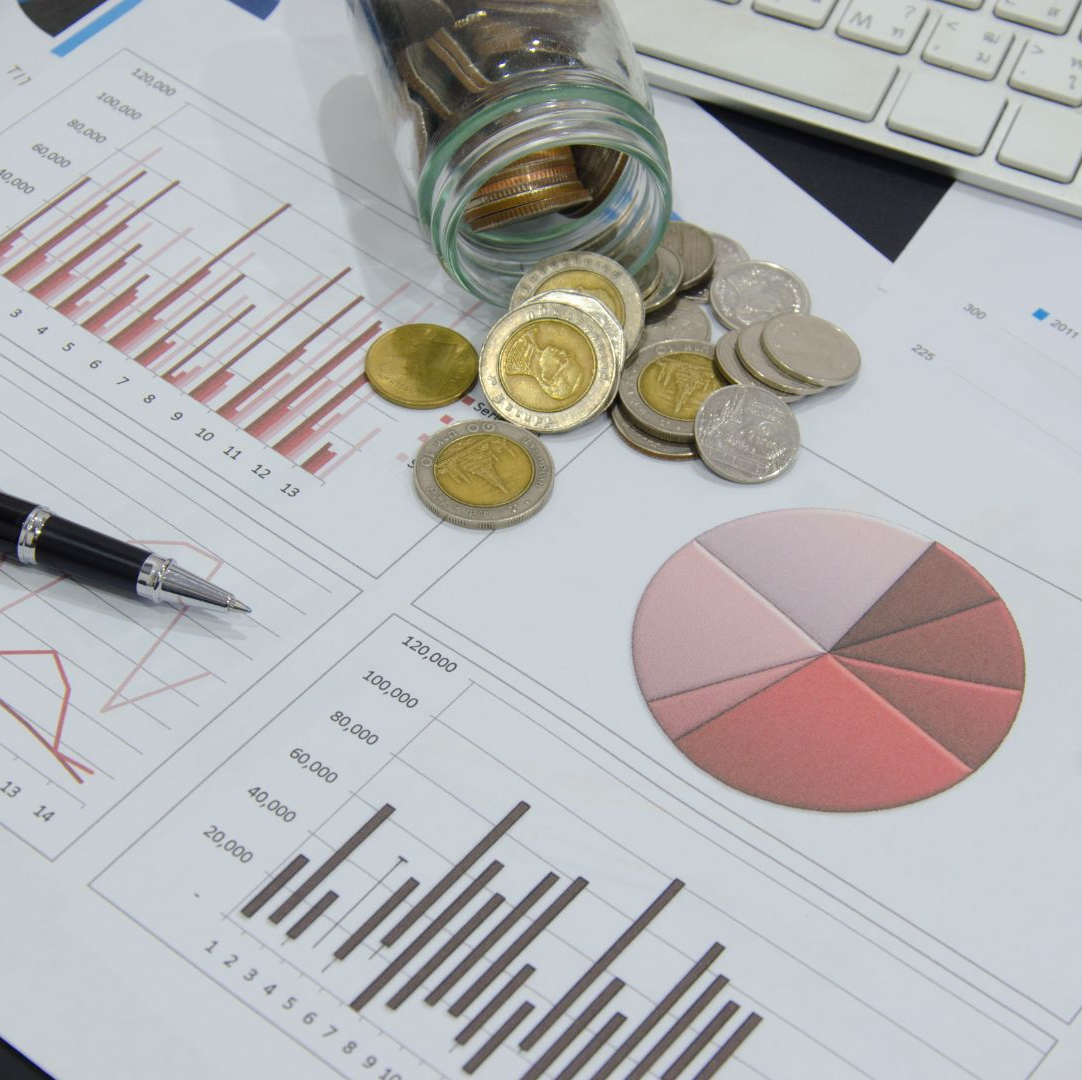A diversified portfolio generally reduces the risk suffered by investors in a highly volatile market. The economic crisis and recession of 2020, more than anything that has happened in the recent past, has called for more diversification for all investors. With the market being in such disarray, many investors are looking for investment instruments with lower risks to balance out their portfolios. Whether you are just joining the financial and investment world, or you have been a part of it for a while, the best time to invest is always “now.” Regardless of the economic situation, everyone who has the financial capabilities to invest or diversify their investment portfolio should do so. However, to err on the side of caution, it is best to do so with low-risk assets that are easy to understand and digest. Two interesting assets that can be classified thus are Certificates of Deposits (CDs) and savings bonds.
Differences Between CDs and Savings Bonds
Certificates of Deposits (CDs) and savings bonds are safe investments options for investors looking for a less-risky way to diversify or begin their investments. Both instruments have many things in common. For instance, they both generally have lower returns than riskier investment instruments. If you need an investment vehicle that can help cushion the effects of inflation or one where your can build your returns in the long term, these financial instruments are great choices. They also present a great way to help your preserve your wealth. Lastly, both will help you keep your money as long as you don’t withdraw your investment too early. With all these similarities, CDs and bonds also have distinct qualities, especially the duration of investments. Bonds tend to take a long while to mature, while CDs can do so in a matter of thirty days.
Understanding the Investment Instruments
To completely understand both investment instruments, investors must do adequate research and speak with experts when necessary. However, one thing is clear about these safe instruments. They are safe investments, and safe investments generally attract a lower rate of returns. Lower returns are not always a disadvantage. They are still great choices for those who want to preserve their wealth and build their investments long-term or even mitigate the effects of inflation. Inflation decreases the buying power of consumers. This means that you will get less for more money. If you have your money parked in a bank where it is not earning as much interest as the inflation rate, there would be problems. This article examines two low-risk investments that can help you grow your money while still keeping it safe for later use.
Certificates of Deposits (CDs)
A certificate of deposit is a savings account where holders get a fixed interest rate for keeping their money for an agreed duration. The duration or maturity date is the period for which you have agreed to keep your money in a CD account while earning your interest. Operating a CD account can be compared to keeping your money in a standard savings account with the exception of the maturity date. You can only withdraw without penalties after your investment matures.As a result of the restriction, CD accounts have higher interest rates than standard savings accounts. However, the current economic situation has drastically reduced the returns rate on CD accounts. Some CD accounts may even offer lower interest than traditional savings accounts. According to the Federal Deposit Insurance Corporation (FDIC), the nation averaged a CD return rate of 0.22% in July. That figure is significantly lower than the 0.64% average in July 2020. If the CD returns rate is lower than the rate of inflation, investors lose money. Fortunately, the Brookings Institution reports that the inflation rate is lower than the Federal Reserve’s expectation of 2%.
Savings Bonds
Government-issued bonds are debt securities issued by the government. In return for offering the government a loan, investors get a fixed interest rate paid twice a year until the bond matures. The U.S Treasury Department offers EE bonds and I bond to investors. Both can be purchased online on the department’s website. The difference between the two is the rate of returns. While the EE bond has a fixed rate of returns, the I bond has a fixed rate of returns plus a variable rate to accommodate inflation. The department states that the inflation rate usually changes twice every year, meaning that I bond adjusts for inflation but lacks the guarantee of value at maturity, unlike EE bond. Paper bonds and electronic bonds are the two types of EE bonds. Paper bonds issued between May 1997 and April 2005 gave investors the opportunity to spend half of the bond’s face value in the transaction. For example, a paper bond of $100 was purchased for $50. On the other hand, electronic EE bonds go for their face value. If an electronic EE bond is issued for $100, investors have to pay $100. Electronic EE bonds are available in denominations between $25 and $10,000. Both paper and electronic bonds are worth double the purchase price upon maturity (20 years after purchase). Investors get double the amount they invest and continue receiving interest on their investment ten years after maturity. Another important thing to note is that electronic EE bonds begin to accumulate interest immediately after purchase. The interest is expected to be double its original price when it reaches its 20-year maturity date. If this does not happen, the Treasury Department makes a one-time adjustment to balance things out. Just like CDs, investors can only get the best from their savings bonds when they wait until the investment matures before withdrawing the money. Otherwise, they may have to forfeit some of the initial investment or part of the accrued interest to cover the penalty fee. Since savings bonds are almost risk-free, investors are only guaranteed adequate returns when they wait until the 20-year maturity date before making withdrawals. If you want a long-term investment, savings bonds are a great choice.
Which is Better, Savings Bonds or CDs?
Before deciding which is better for you and your investment portfolio, you have to consider your financial objectives, risk tolerance, and how soon you will need to make withdrawals. If you are only looking for short-term investment assets, then both instruments are not for you. Melissa Joy of Pearl Planning Wealth Advisor, Michigan, explains that CDs and savings bonds are better as mid-term or long-term investments. The certified financial planner adds that both instruments are different from regular savings or checking accounts as they are better for keeping money in the long term. Here are factors that can help you decide the best investment assets between CDs and Savings bonds.
Risk Level
On the risk level of CDs and Savings bonds, Joy explains that both are safe, but CDs are safer since they are FDIC-insured. The corporation insures up to $250,000 in each CD account. You are guaranteed your investment if you stay within this limit. You will also get the accrued interest on the money as long as you hold it for the agreed period. Early withdrawals will attract a reduction in the accrued interest. The reduction will be based on the duration of the CD and the general terms of the bank. While savings bonds are not insured, they have the guarantee of the U.S government, and to date, it has never failed to pay back investors. Amy Richardson, a certified planner at Schwab Intelligent Portfolios, explains that CDs and savings are at the peak of the investment ladder when it comes to safety. She also recommends CDs over savings bonds for investors that have a strong aversion for risks.
Tax Considerations
Investors who do not want to lose a big chunk of their investment to taxes must crucially consider this factor. Investors do not pay taxes on the principal amount for CDs, but the accrued interest is taxable. However, you can avoid paying taxes on the accumulated interest if you purchase the CD in a tax-advantaged account such as an Individual Retirement Account (IRA). In addition, an investor’s tax bracket would determine how much tax they pay on the accrued interest. For instance, if an investor in the 12% federal tax bracket purchases a $5,000 certificate of deposit with 3% interest, they would pay around $18 in federal taxes on the interest. The $18 is the 12% tax on their approximately $150 interest. They would also have to pay state and local taxes. On the other hand, interest on savings bonds is not subject to state or local government taxes. Investors only have to pay federal taxes on the interest. This is why savings bonds are popular with many investors who live in states with high income taxes. For more clarity, you can use an online CD calculator and a savings bond growth calculator to see your expected returns after taxes on the two investments. Doing this might make the decision easier.
Returns
The first thing to note here is that the country’s economic situation often affects the interest rates on savings bonds. If the market is down, you will earn less interest on your investment. However, an EE savings bond will get you at least double your initial deposit, regardless of the economic situation again, only if you leave the bond till its maturity date. If you decide to sell or cash in your savings bond before its maturity date, you may make a loss or gain, depending on market conditions at the time of the transaction. On the other hand, CDs offer fixed interest rates for a fixed duration. Though different financial institutions sent different rates for CDs, the general rule is that longer-term CDs attract higher interest rates. Bonds have several factors that make them quite popular with investors. They are great for preserving wealth while also steadily growing it. For example, investors can get around 3.5% returns on their original investments every year with EE bonds. This percentage is a division of double the investment spread over 20 years. One can also get more than a savings bond’s face value when selling to another investor with good market conditions. But this could go whether way. On the other hand, between 2000 and 2007, 5-year CD interest rates were between 3.45% and 5.95%. However, since 2008, the rates have not surpassed the 4% threshold. Currently, 5-CD rates are between 0.60% and 1.10%. Investors will do better with an EE savings bond than parking their money in a CD account with these figures. But this is only for investors who can wait out the 20-year maturity date. Otherwise, you would earn little interest in your investment. It is also important to note that the market can turn for better at any time. Investors can use the ladder method to hold multiple CDs, which will have different maturity dates. If interest rates breach the 4% threshold, CDs would certainly present more returns than savings bonds. Lastly, it is essential to note that savings bonds can’t take over $10,000. Investors who have more money to invest can build a diverse portfolio with both CDs and bonds. Also, CDs can present an easy escape for those who are unsure when they would want to cash their investments.
Investing During Economic Downturns
With the economy’s current situation, many people might shy away from investing, but it is wise to keep investing. If you do not have any investments, you should start immediately instead of waiting for better market conditions. Investors who start early will accrue more gains due to compound interest. However, before your start investing, ensure you have all the information you need and you are confident that it is time to take the plunge. Otherwise, hold on until you are sure. Also, ensure you save. Those that had little savings before the pandemic will not feel the pinch as much as those that had nothing at all. If you have not cultivated the habit, endure you do so immediately. It is also time to ask yourself certain questions about your future if this economic downturn continues. Do you have multiple sources of income? Any savings? What happens if you lose your only source of income? The answers will help you decide if it is time to start saving or not. Whatever you do, make sure you have a solid plan that can help you get through good or bad times in the future.













